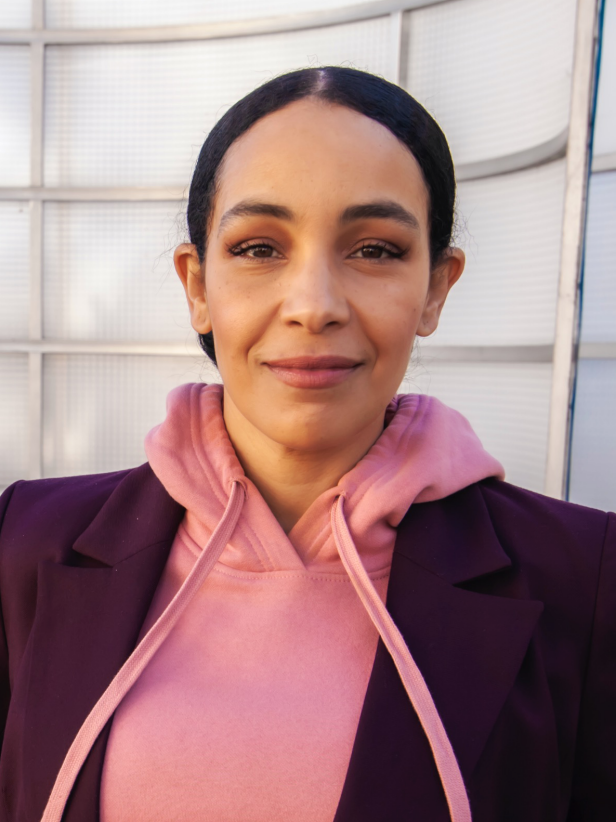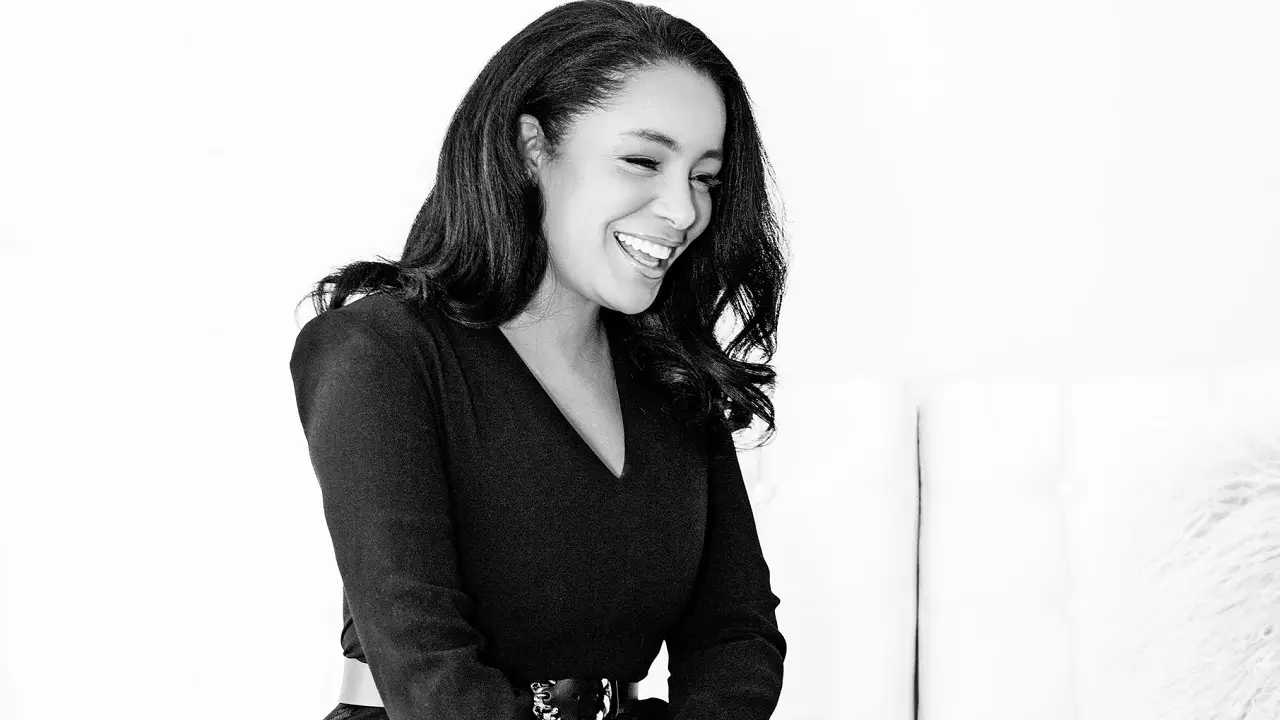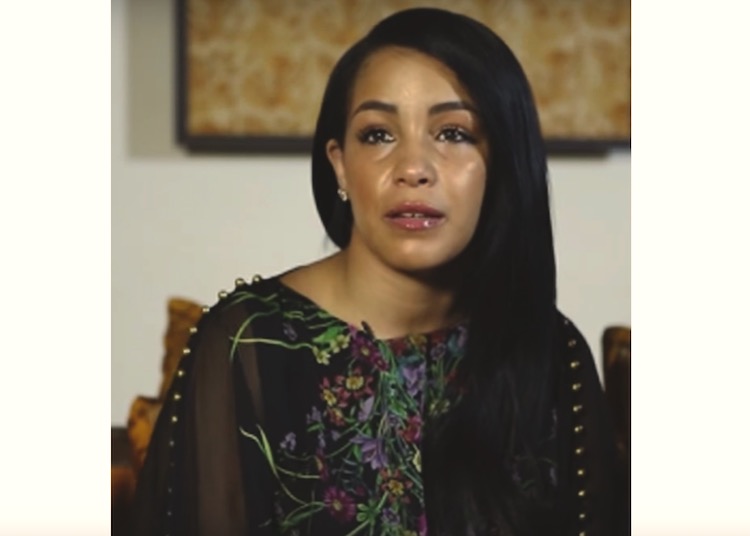Monique Idlett: The Intersectionality Pioneer In Pop Culture
"Monique idlett" is a noun that refers to a concept developed by Monique Idlett, an American sociologist known for her work on the intersection of race, gender, and class.
Idlett's concept of "monique idlett" explores the ways in which social systems and institutions create and reinforce inequalities based on race, gender, and class.
This article will delve deeper into the concept of "monique idlett," examining its relevance, benefits, and key historical developments.
- Taylor Swift Buys A 2 5 Million
- What Happened To Tina Turner S Sister
- Casey Burke Bio Age Wiki Facts And
- Kelly Jones Is Happily Married To His
- Who Is Sarah Jindra S Husband Brent
Monique Idlett
Monique Idlett's work on the concept of "monique idlett" is a significant contribution to the field of sociology, providing a framework for understanding the intersection of race, gender, and class.
- Intersectionality
- Social Inequality
- Race
- Gender
- Class
- Oppression
- Power
- Privilege
- Social Justice
Idlett's concept of "monique idlett" provides a nuanced understanding of the ways in which social systems and institutions create and reinforce inequalities. Her work has been influential in the development of policies and programs aimed at promoting social justice and equity.
Intersectionality
Intersectionality is a key aspect of Monique Idlett's work on "monique idlett." It refers to the interconnected nature of social identities and how they can overlap to create unique experiences of oppression and privilege.
- Who Are Pharrell Williams Parents Meet Pharoah
- Who Is Alexander Calvert S Wife Inside
- What Happened To Mike Zobel Wife And
- Brandon Charnas Bio Age Wiki Facts And
- Fame Mark Belling Net Worth And Salary
- Multiple Identities
Intersectionality recognizes that individuals can have multiple social identities, such as race, gender, class, and sexual orientation, and that these identities intersect to shape their experiences.
- Power Dynamics
Intersectionality also considers how power dynamics interact with social identities. For example, a Black woman may face discrimination based on both her race and gender.
- Unique Experiences
Intersectionality emphasizes that the experiences of individuals who belong to multiple marginalized groups are unique and cannot be fully understood by examining only one aspect of their identity.
- Social Justice
Intersectionality is a critical framework for social justice work, as it helps us to understand the complex ways in which oppression operates and to develop more effective strategies for addressing it.
By understanding the concept of intersectionality, we can better understand the experiences of marginalized groups and work towards creating a more just and equitable society.
Social Inequality
Social inequality is a major cause of monique idlett. It refers to the unequal distribution of resources, opportunities, and power in a society. This inequality can be based on factors such as race, gender, class, and sexual orientation.
Monique idlett explores the ways in which social inequality creates and reinforces oppression. For example, women are often paid less than men for the same work, and people of color are more likely to live in poverty than white people. These inequalities are not simply a matter of individual prejudice, but are built into the very fabric of our society.
Understanding the connection between social inequality and monique idlett is critical for developing effective strategies to address oppression. By identifying the root causes of inequality, we can begin to develop policies and programs that will create a more just and equitable society.
Race
Race is a social construct that divides people into distinct groups based on perceived physical characteristics, such as skin color, hair texture, and facial features. While race has no basis in biology, it has profound implications for individuals and societies.
- Racial Identity
Racial identity refers to the sense of belonging to a particular racial group. This identity can be shaped by factors such as family, community, and social experiences.
- Racial Prejudice
Racial prejudice is a negative attitude towards people of a particular race. This prejudice can be expressed through stereotypes, discrimination, and violence.
- Racial Discrimination
Racial discrimination is the unfair treatment of people based on their race. This discrimination can occur in many areas of life, such as housing, employment, and education.
- Racial Inequality
Racial inequality refers to the unequal distribution of resources, opportunities, and power between different racial groups. This inequality can be seen in areas such as income, health, and education.
These are just a few of the many facets of race that are relevant to the study of monique idlett. By understanding the complex and multifaceted nature of race, we can better understand the ways in which it shapes our lives and societies.
Gender
Gender is a central component of monique idlett, as it shapes the experiences of individuals and groups in society.
Gender can affect monique idlett in a number of ways. For example, women are often paid less than men for the same work, and they are more likely to be victims of violence. Additionally, gender roles and expectations can limit the opportunities available to individuals, particularly those who do not conform to traditional gender norms.
Understanding the connection between gender and monique idlett is critical for developing effective strategies to address inequality and oppression. By identifying the ways in which gender shapes our lives, we can begin to challenge gender stereotypes and create a more just and equitable society.
Class
Class is a fundamental aspect of monique idlett, shaping the opportunities and experiences of individuals and groups in society.
- Socioeconomic Status
Socioeconomic status refers to the economic and social position of an individual or group. It is typically measured by income, education, and occupation.
- Social Stratification
Social stratification refers to the division of society into different social classes. These classes are often based on factors such as wealth, power, and prestige.
- Class Consciousness
Class consciousness refers to the awareness of one's own class position and the interests of one's class. This consciousness can lead to collective action to improve the conditions of one's class.
- Class Mobility
Class mobility refers to the movement of individuals or groups between different social classes. This mobility can be either upward or downward.
These are just a few of the many ways in which class shapes monique idlett. By understanding the complex and multifaceted nature of class, we can better understand the ways in which it affects our lives and societies.
Oppression
Oppression is a critical component of monique idlett, as it shapes the experiences of individuals and groups in society. Oppression refers to the systematic and institutionalized mistreatment of a particular group of people based on their race, gender, class, or other social identity.
Monique idlett explores the ways in which oppression creates and reinforces inequality. For example, women are often paid less than men for the same work, and people of color are more likely to live in poverty than white people. These inequalities are not simply a matter of individual prejudice, but are built into the very fabric of our society.
Understanding the connection between oppression and monique idlett is critical for developing effective strategies to address inequality and oppression. By identifying the root causes of oppression, we can begin to develop policies and programs that will create a more just and equitable society.
Power
Power is a central aspect of monique idlett, shaping the ways in which individuals and groups are able to assert their agency and influence the world around them. It encompasses a range of dimensions, from individual capabilities to institutional structures, and can be used both to oppress and to liberate.
- Structural Power
Structural power refers to the power that is embedded in social institutions and structures. It can be used to maintain the status quo and to oppress marginalized groups.
- Institutional Power
Institutional power refers to the power that is vested in organizations and institutions. It can be used to shape public policy and to allocate resources.
- Interpersonal Power
Interpersonal power refers to the power that individuals have over each other in their personal relationships. It can be used to control and dominate others, or to support and empower them.
- Individual Power
Individual power refers to the power that individuals have over their own lives. It can be used to make choices, to set goals, and to achieve personal growth.
These different facets of power are interconnected and interdependent. They shape the ways in which individuals and groups are able to participate in society and to influence the decisions that affect their lives. Understanding the dynamics of power is essential for understanding monique idlett and for developing strategies to address inequality and oppression.
Privilege
Privilege is a central aspect of monique idlett, shaping the ways in which individuals and groups experience and navigate the world. It refers to the unearned advantages and benefits that certain individuals or groups have over others based on their social identities, such as race, gender, class, sexual orientation, or disability.
- White Privilege
White privilege refers to the unearned advantages and benefits that white people have over people of color in society. This privilege can be seen in areas such as education, employment, housing, and criminal justice.
- Male Privilege
Male privilege refers to the unearned advantages and benefits that men have over women in society. This privilege can be seen in areas such as employment, politics, and personal safety.
- Class Privilege
Class privilege refers to the unearned advantages and benefits that wealthy and middle-class people have over poor people in society. This privilege can be seen in areas such as education, healthcare, and housing.
- Heterosexual Privilege
Heterosexual privilege refers to the unearned advantages and benefits that heterosexual people have over LGBTQ people in society. This privilege can be seen in areas such as employment, housing, and healthcare.
These are just a few of the many facets of privilege that are relevant to the study of monique idlett. By understanding the complex and multifaceted nature of privilege, we can better understand the ways in which it shapes our lives and societies.
Social Justice
Monique idlett is inherently connected to social justice. Monique idlett refers to the interlocking systems of race, gender, class, and other forms of oppression that create and reinforce inequality in society. Social justice, on the other hand, is the fair and just distribution of resources, opportunities, and power within a society, with the goal of creating a more equitable and just world.
Social justice is a critical component of monique idlett because it provides a framework for understanding the root causes of inequality and oppression. This framework can then be used to develop strategies to address these issues and create a more just and equitable society.
For example, monique idlett can be used to understand why women are paid less than men for the same work, and why people of color are more likely to live in poverty than white people. This understanding can then be used to develop policies and programs to address these inequalities.
Frequently Asked Questions about Monique Idlett
This FAQ section provides answers to some of the most common questions about Monique Idlett and her work on the concept of "monique idlett."
Q: What is "monique idlett"?
A: "Monique idlett" is a concept that refers to the interlocking systems of race, gender, class, and other forms of oppression that create and reinforce inequality in society.
Q: What are the key components of "monique idlett"?
A: The key components of "monique idlett" include race, gender, class, and other forms of oppression, such as sexual orientation, disability, and age.
Q: How does "monique idlett" contribute to social justice?
A: "Monique idlett" provides a framework for understanding the root causes of inequality and oppression, which can then be used to develop strategies to address these issues and create a more just and equitable society.
Q: What are some examples of "monique idlett" in action?
A: Examples of "monique idlett" in action include the gender pay gap, racial disparities in wealth and income, and discrimination against LGBTQ people.
Q: How can I learn more about "monique idlett"?
A: You can learn more about "monique idlett" by reading books and articles on the topic, attending workshops and lectures, and getting involved in social justice organizations.
These FAQs provide a basic overview of Monique Idlett and her work on "monique idlett." For more in-depth information, please refer to the following resources:
For further discussion, let's explore the historical development of "monique idlett" and its impact on social justice movements.
Tips for Understanding Monique Idlett
The concept of "monique idlett" can be complex and challenging to understand. These tips can help you to break down the concept and apply it to your own life and work.
Tip 1: Start by learning about the key components of "monique idlett." This includes race, gender, class, and other forms of oppression.
Tip 2: Read books and articles about "monique idlett" and attend workshops and lectures on the topic. This will help you to deepen your understanding of the concept.
Tip 3: Get involved in social justice organizations. This will give you the opportunity to put your understanding of "monique idlett" into practice.
Tip 4: Be aware of your own biases and privileges. Everyone has biases and privileges, but it is important to be aware of them so that they do not your understanding of "monique idlett."
Tip 5: Be open to learning and growing. The concept of "monique idlett" is constantly evolving, so it is important to be open to learning new things about it.
By following these tips, you can gain a deeper understanding of "monique idlett" and its implications for social justice.
In the next section, we will explore the historical development of "monique idlett" and its impact on social justice movements.
Conclusion
The concept of "monique idlett" has helped us to understand the complex and interlocking systems of oppression that shape our world. We have learned that race, gender, class, and other forms of oppression are not simply individual prejudices, but are built into the very fabric of our society.
Understanding "monique idlett" is critical for creating a more just and equitable world. By identifying the root causes of oppression, we can begin to develop strategies to address them. We must all work together to create a world where everyone has the opportunity to reach their full potential.
- Who Is Yazmina Gonzalez Meet Spencer Rattler
- Jon Batiste Bio Age Parents Wife Children
- Samadhi Zendejas Age Biography Net Worth Boyfriend
- Who Is Alexander Calvert S Wife Inside
- M I A Rapper Family Husband Children

Get to Know Monique Idlett from Discovery's Undercover Billionaire

Exploring Monique IdlettMosley's Net Worth in 2021 — How Did the

Monique Idlett Net Worth, Age【 Timbaland Wife Ex 】Bio Wiki, Empire